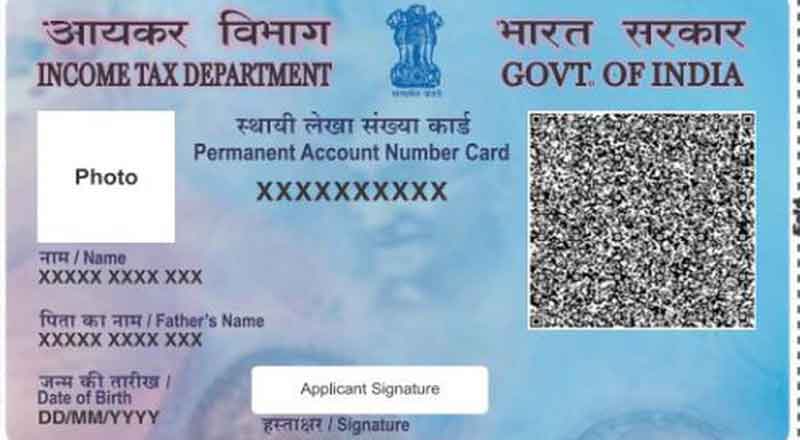Transforming Identification with Technology
The Permanent Account Number (PAN), a 10-digit alphanumeric identifier issued by India’s Income Tax Department, is set to undergo a transformative upgrade under the PAN 2.0 Project. This landmark initiative aims to integrate advanced features, enhance cybersecurity, and establish PAN as the single identifier for businesses. Approved by the Union Cabinet on November 26, the upgrade seeks to streamline financial and identification processes, marking a significant shift toward a unified digital ecosystem.
The project introduces features like a QR code for secure verification, a comprehensive online application process, and a mandatory data vault system for safeguarding PAN-related information. With nearly 78 crore PAN holders, this transformation has implications for individuals and businesses alike, heralding a new era of ease and efficiency in India’s financial and regulatory frameworks.
What is the PAN 2.0 Project?
The PAN 2.0 Project is a comprehensive overhaul of India’s existing PAN system. With a financial outlay of ₹1,435 crore, the initiative addresses longstanding industry demands for a unified business identifier. It also aims to revamp the 15-20-year-old IT infrastructure supporting the PAN ecosystem.
Union Minister for Information and Broadcasting, Ashwini Vaishnaw, highlighted the key objectives during the Cabinet briefing:
- Establishing PAN as a common business identifier across digital systems of government agencies.
- Merging PAN, TAN (Tax Deduction and Collection Account Number), and TIN (Taxpayer Identification Number) to create a streamlined system.
- Upgrading the IT backbone to enhance the efficiency of taxpayer registration and service delivery.
This transformative project is expected to bridge gaps in the existing system and bring taxpayer services closer to a technology-driven, paperless, and grievance-redressal-enabled framework.
Features of PAN 2.0
- QR Code Integration
All new and existing PAN cards will feature a QR code, introduced initially in 2017. The upgraded QR code will enable seamless integration of financial transactions with the tax department, bolstering the system’s efficiency and reducing errors.
- Mandatory Data Vault System
A significant addition to PAN 2.0 is the PAN data vault system. Entities such as banks and insurance companies, which regularly handle PAN data, will now be required to securely store this information in a protected digital vault. This measure ensures robust data protection and cybersecurity.
- Unified Portal for Applications
The existing PAN application system will be replaced by a unified, paperless, online portal. This upgrade aims to simplify the process, ensuring faster issuance and a user-friendly interface. The portal will also focus on enhanced grievance redressal mechanisms.
- Consolidated Taxpayer System
By merging PAN, TAN, and TIN, the project eliminates the need for multiple identifiers. This integration creates a centralized system, reducing administrative burdens for businesses and ensuring consistency in government databases.
Implications for Individuals and Businesses
For Individuals
Existing PAN holders, approximately 78 crore in number, can opt to upgrade their PAN cards to the new QR-code-enabled version. The upgrade will not alter their PAN number and will be free of cost, as per the government announcement. The enhanced QR code will ensure faster and more secure financial transactions.
The paperless application process simplifies the procedure for new applicants and eliminates the need for physical documentation. Additionally, individuals can expect improved data security, reducing the risks of identity theft and unauthorized access.
For Businesses
For enterprises, PAN 2.0 introduces a common identifier system, replacing the need for multiple tax-related identifiers like TAN and TIN. This unification simplifies tax filings, including TDS/TCS returns and payment challans. Businesses will also benefit from reduced administrative overhead and enhanced integration with government systems.
The Bigger Picture: Reinventing Taxpayer Services
The PAN system serves as a cornerstone of India’s tax ecosystem. By linking all transactions—ranging from tax payments to returns and specified financial activities—with the tax department, PAN ensures traceability and compliance.
The PAN 2.0 upgrade not only modernizes this foundational system but also aligns it with evolving technological and regulatory standards. With the introduction of advanced cybersecurity measures, the project secures critical taxpayer data, addressing growing concerns in the digital age.
For the tax authorities, the revamped system enhances data consistency and simplifies processes, paving the way for better policy-making and compliance monitoring.
Challenges and the Road Ahead
While the PAN 2.0 Project promises significant benefits, its implementation comes with challenges:
Technological Transition: Upgrading legacy systems and ensuring interoperability with existing databases require meticulous planning and execution.
Awareness and Adoption: Ensuring that all individuals and businesses, especially those in rural areas, understand and adopt the new system will be crucial.
Cybersecurity Compliance: Entities handling PAN data must adhere to strict cybersecurity standards, which may involve additional costs and infrastructure upgrades.
Despite these hurdles, the initiative lays a strong foundation for a digitally unified financial ecosystem.
A Unified Future for Identification and Compliance
The PAN 2.0 Project is a bold step toward modernizing India’s identification and financial systems. By leveraging technology to enhance security, streamline processes, and unify identifiers, the initiative not only simplifies the lives of individuals and businesses but also strengthens India’s regulatory framework.
As PAN evolves into a common identifier for businesses and a robust source of financial information, it reflects the government’s vision of a transparent, efficient, and secure system. PAN 2.0 is not just an upgrade; it is a reimagining of the possibilities of digital governance in India.
(With inputs from agencies)





